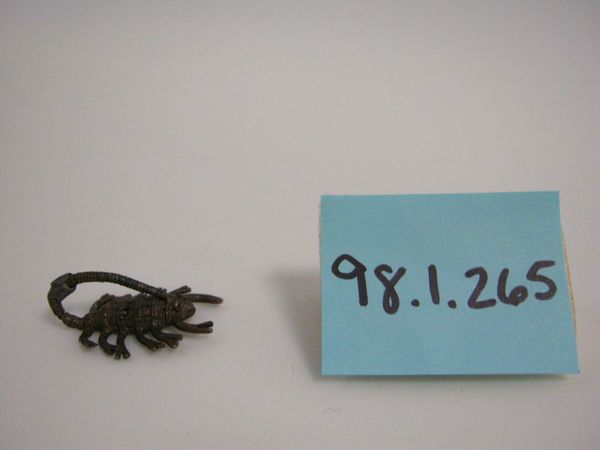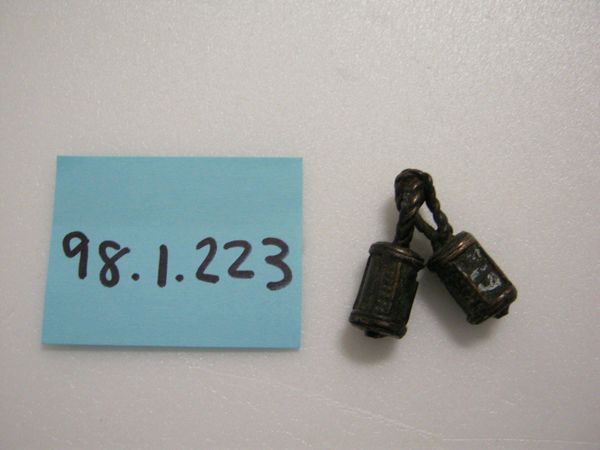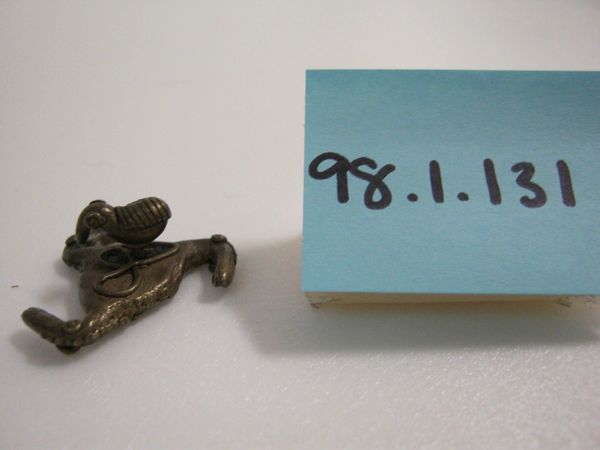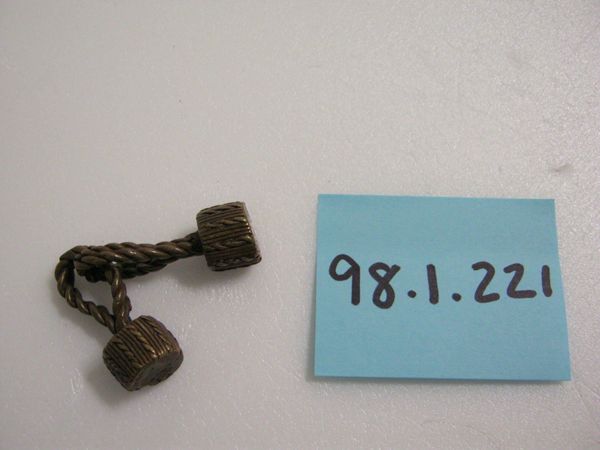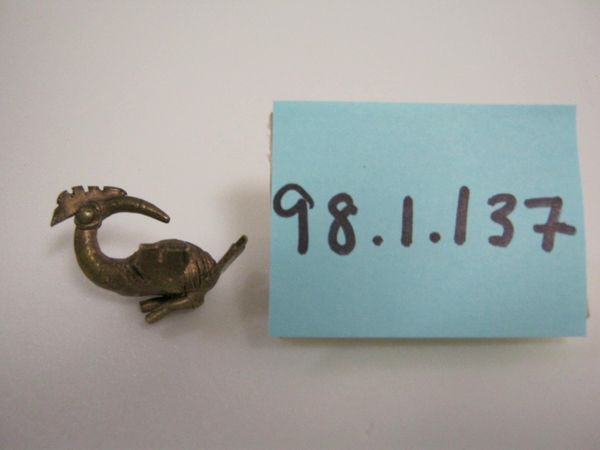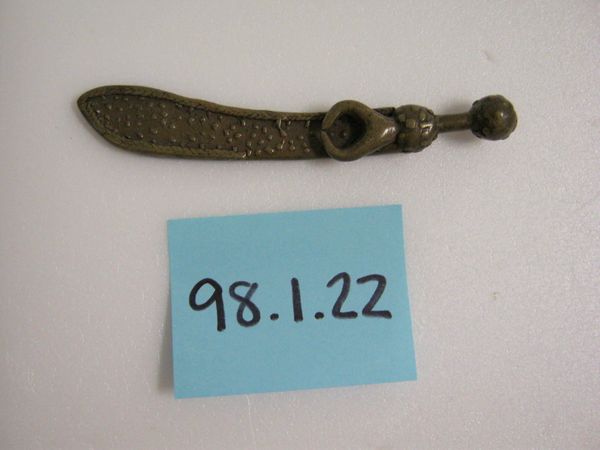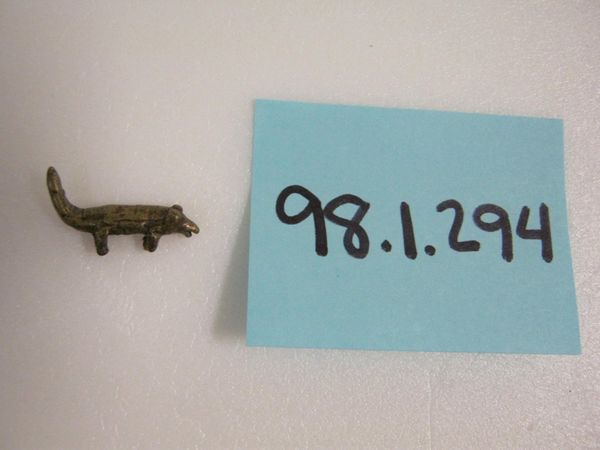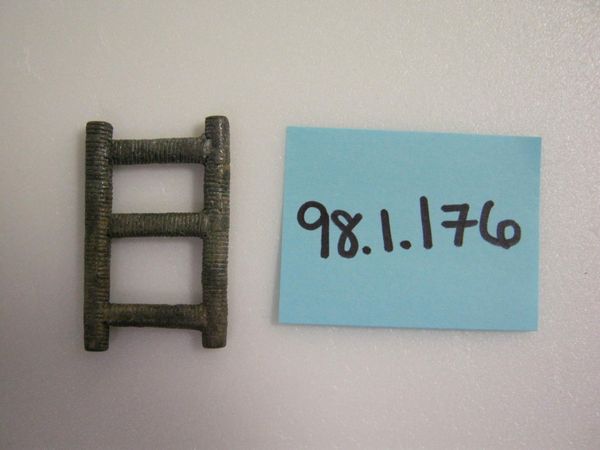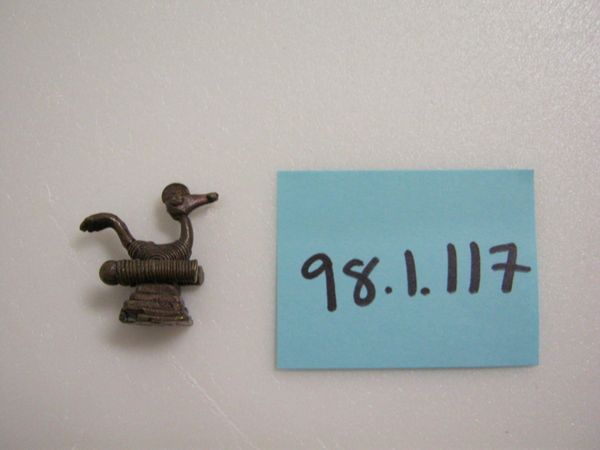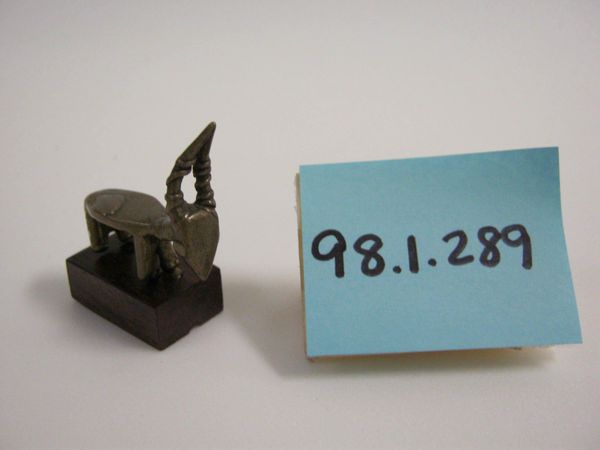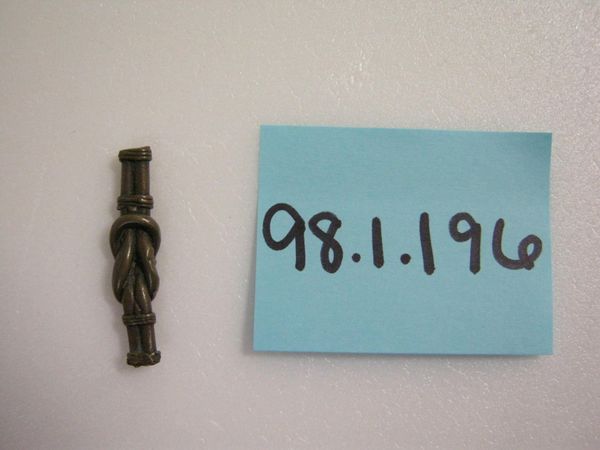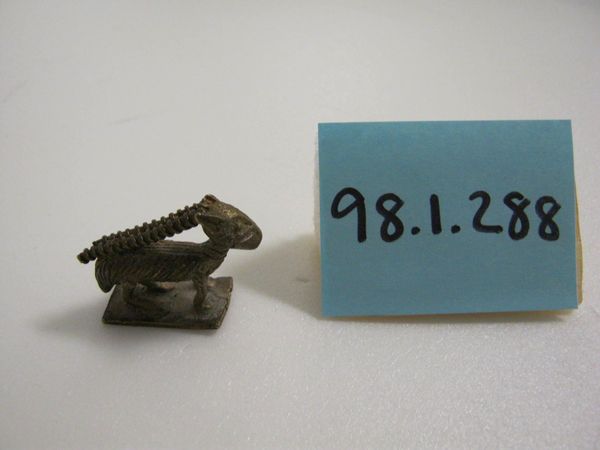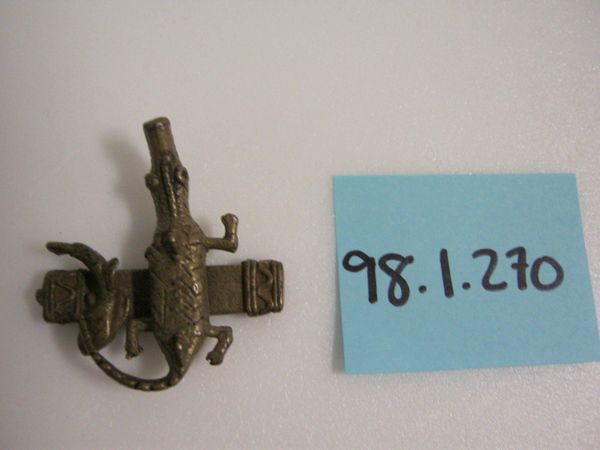![Goldweight [Scorpion] by Akan](/_next/image?url=https%3A%2F%2Fd2w8kbdekdi1gv.cloudfront.net%2FeyJidWNrZXQiOiAiYXJ0ZXJhLWltYWdlcy1idWNrZXQiLCAia2V5IjogImFydHdvcmtzL2E1MTA4NTc4LWMxNGMtNDM0Mi1iMmUxLWNkZGFlYjY2YzM1NC9hNTEwODU3OC1jMTRjLTQzNDItYjJlMS1jZGRhZWI2NmMzNTRfZnVsbC5qcGciLCAiZWRpdHMiOiB7InJlc2l6ZSI6IHsid2lkdGgiOiAxOTIwLCAiaGVpZ2h0IjogMTkyMCwgImZpdCI6ICJpbnNpZGUifX19&w=3840&q=75)
brass, found-object, sculpture
african-art
brass
found-object
figuration
sculpture
Dimensions: 3/4 x 3/4 x 1 3/8 in. (1.91 x 1.91 x 3.49 cm)
Copyright: Public Domain
Editor: Here we have an Akan goldweight from the 19th or 20th century, a small sculpture rendered in brass depicting a scorpion. I’m struck by how this familiar yet fearsome creature has been reduced to this charming miniature. What do you see in this piece? Curator: Focusing on its formal qualities, notice how the artist utilizes geometric forms to create the body, segmented and ribbed. This contrasts sharply with the smooth, curving tail raised in a menacing posture. The tension between these shapes creates a dynamic visual interplay, doesn't it? Editor: Yes, the geometric versus organic is very striking! The tail is the only really curved element, making it stand out even more. Curator: Precisely! The sculptor seems to have been acutely aware of texture as well. The corrugated pattern along the back leads the eye from one end to the other, culminating in that final curl of the tail. Editor: I see what you mean. It’s like a deliberate pathway designed by the artist. So, looking closely at these formal elements – the contrasting shapes and textures – helps us understand the artist's choices? Curator: Absolutely. It prompts us to consider the intentions of the artist, what was crucial to convey in the essence of the subject matter. We can also study other goldweights and learn how the maker played with representation versus abstraction in this unique sculptural category. Editor: That’s a great point. It becomes less about just a scorpion and more about artistic decisions and the broader sculptural genre of the Akan goldweights. I’ll definitely be paying more attention to how artists use form and texture now. Curator: Indeed, a valuable consideration for any close observation.
Comments
No comments
Be the first to comment and join the conversation on the ultimate creative platform.
